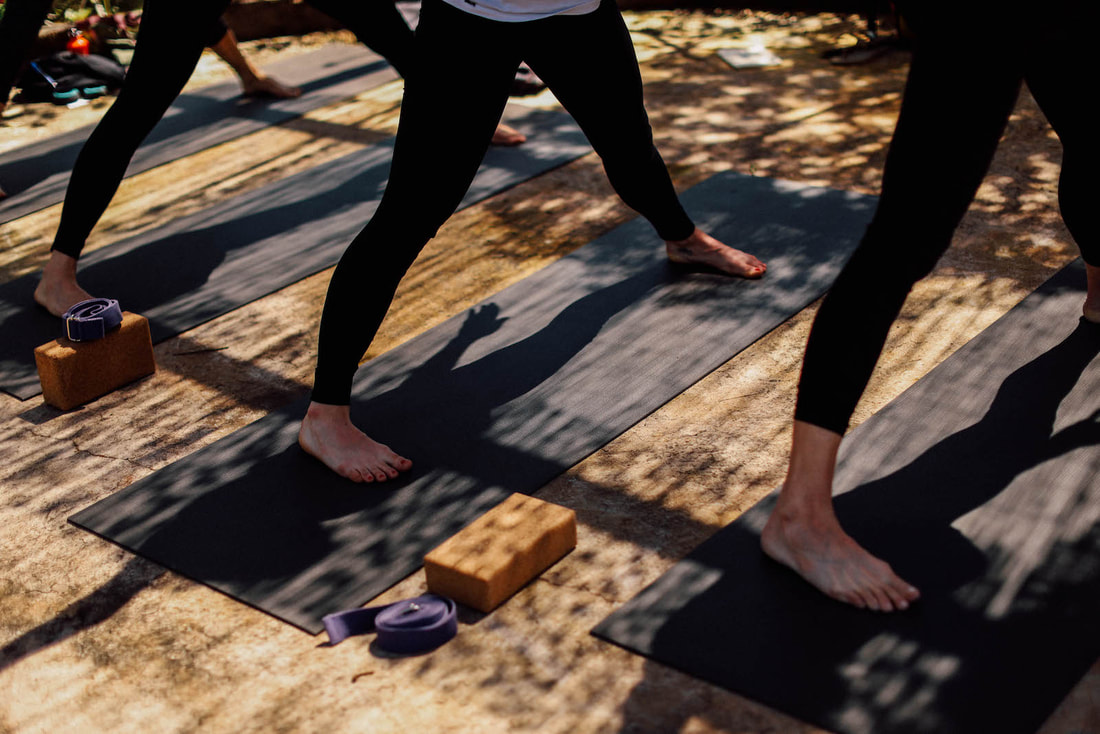|
For many practitioners of vinyasa, music is a big part of class. It can really enhance the experience in body and mind when the tunes are just right in intensity and rhythm. This also works the other way – music can impact a class in a negative way and take away the beauty of a class and a teacher. As a vinyasa flow teacher, a good playlist that has that ability to enhance the experience for your students can make all the difference in your confidence and how well you connect with your students. So how do you create the perfect yoga playlist for vinyasa flow? While this is easy for some yoga teachers, it's a big challenge for others. Here are 9 things to consider.
1. Follow the rainbow A typical vinyasa class will have an intensity arch like a rainbow. The class will have a beginning, a middle and an end. It will to some degree go from mellow to more intense and back to mellow. Your playlist should follow the arch of your class. Are you starting supine or seated? Do you have a clear peak of your class? Is the pace slow and juicy or high energy? You should have an idea of what class you will teach before you create a playlist. 2. Don't be lazy You will probably find other teachers' playlists on Spotify or get a link to a colleague's playlist that you experienced and loved while in a class. But chances are it will not work as well in your own class as it did in theirs. Simply because of point number 1 above. There is nothing wrong with finding inspiration from others, but the trick is to use a borrowed playlist as a starting point and adjust it (take away, add) to suit your own class. Make it yours. It also feels much better than borrowing. 3. Make yourself smile To create a general playlist for vinyasa flow, and as a good starting point if you are new to creating playlists, simply start with yourself. What music puts a smile on your face? Build a playlist like an arch, as discussed above. Start with 2–4 softer tunes. In the middle you add 4–6 songs of the kind that you like in the more intense part of a class. Finish with 2–4 soft pieces. If you play music you like, you may not please everyone (you never can) but at least you will feel confident, positive and be true to yourself. 4. Test-drive it The only real way of finding out if a playlist works or not is to try it out. Try it on yourself first, rather than in a classroom setting. Quite often we find that a song that seemed like a really good idea for yoga, turned out to be irritating/depressing/choppy/distracting on the mat. 5. Silence is golden Make your playlist about 5–10 minutes shorter than the length of your class. At the beginning of class while your students are landing, it's quite nice with no music at all. During final rest it can be very effective with silence, as a way of letting go of all effort and senses. It can also be effective with a well chosen piece of music. Make sure your choice is well thought through and has meaning if you choose to play a song in savasana. People will really hear it. 6. Make a sloppy list Once you start making multiple playlists you have to become efficient. Create a sloppy playlist that simply has all good songs for yoga that you come across. This is where you pick from when creating your tailored class lists. 7. Make an allround soft list When you teach a group of beginners, a corporate group, or if you jump in to sub another teacher's class you may not want too much identity in your playlist. Create a soft playlist that keeps a low profile for these occasions. Classical piano music can be quite nice, for example. 8. Be aware Lyrics can be distracting for your students, who are trying to hear your instructions throughout the class. Music with lyrics may become competition for attention, and ultimately challenge your presence in the room. Popular music – music that people know from the radio or the past – can have a similar effect, i.e. taking attention away from your teaching. Popular music will also trigger associations, memories and emotions to a higher degree than less known music, and of course this is entirely beyond your control. 9. Volume control Just in the same way it's nice to be aware of dimming lights up or down throughout a yoga class, working with the volume can enhance the experience. A lower volume in the beginning, higher in the intense middle part and again lower towards the end when your student's senses are open and in a way sensitive, is generally a good idea. |
AuthorArticles about the world of teaching and living Vinyasa Flow Yoga by Elin Jensen and Lisa Andersson Rhodiner Categories
All
Archives
November 2023
Categories
All
|

 RSS Feed
RSS Feed